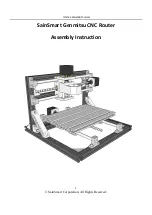
IP Address
An identifier for a computer or device on a TCP/IP network.
Networks using the TCP/IP protocol route messages based on the IP
address of the destination. The format of an IP address is a 32-bit
numeric address written as four numbers separated by periods. Each
number's range is from 0 to 255. For example, 1.160.10.240 could be
a legal IP address.
ISP
Short for Internet Service Provider, a company that provides
access to the Internet. For a monthly fee, the service provider gives
you a software package, username, password and access phone
number. Equipped with a modem, you can then log on to the Internet
and browse the World Wide Web and USENET, and send and receive
e-mail.
Local Area Network (LAN)
A computer network that spans a relatively small area. Most
LANs are confined to a single building or group of buildings. However,
one LAN can be connected to other LANs over any distance via
telephone lines and radio waves. A system of LANs connected in this
way is called a wide-area network (WAN)
MAC Address
Short for Media Access Control address, a hardware address
that uniquely identifies each node of a network. In IEEE 802 networks,
the Data Link Control (DLC) layer of the OSI Reference Model is
divided into two sublayers: the Logical Link Control (LLC) layer and the
Media Access Control (MAC) layer. The MAC layer communicate
directly with the network media. Consequently, each different type of
network media requires a different MAC layer.
PPPoE (Point to Point Protocol over Ethernet)
PPPoE is Point to Point Protocol that uses Ethernet to authenti-
cate and connect a user’s computer or router to the ISPs network.
32
Appendix C


































